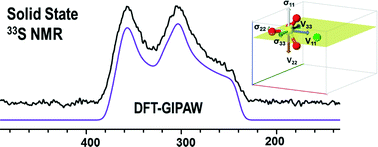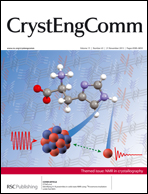Structural assessment of anhydrous sulfates with high field 33S solid state NMR and first principles calculations†
Abstract
A combination of solid state NMR, first principles calculations and single crystal XRD was applied to relate solid state 33S NMR parameters obtained from a series of anhydrous sulfates of the elements of groups I–III. Operating at high magnetic field of 21.14 T provides a dramatic improvement in the quality of spectra due to significantly enhanced sensitivity and a reduction of second order quadrupolar effects. Experimental 33S NMR spectra for most studied sulfates are dominated by quadrupolar interactions with the quadrupolar parameters unique for each compound. Magnetic shielding constants and quadrupolar parameters for sulfur were calculated using plane wave pseudo-potential density functional theory as implemented in the CASTEP computational package. The calculated NMR parameters are in very good agreement with the experimental results and help in assignment of the stationary spectra. The results demonstrate that such a combined computational – experimental solid state NMR approach can aid in an assessment and improved interpretation of the crystallographic data.

- This article is part of the themed collection: NMR crystallography

 Please wait while we load your content...
Please wait while we load your content...